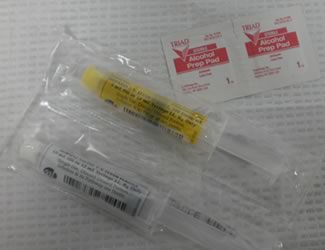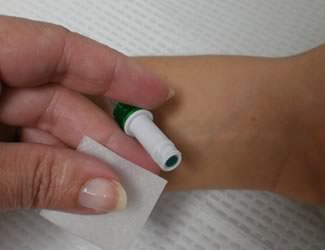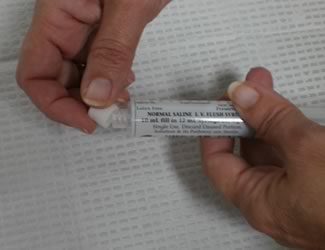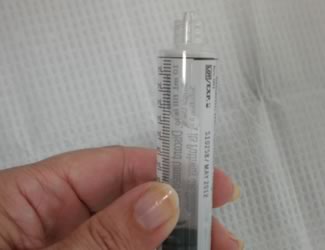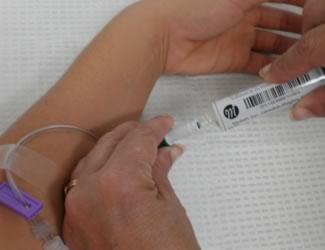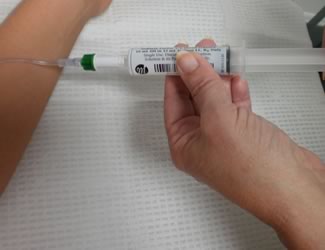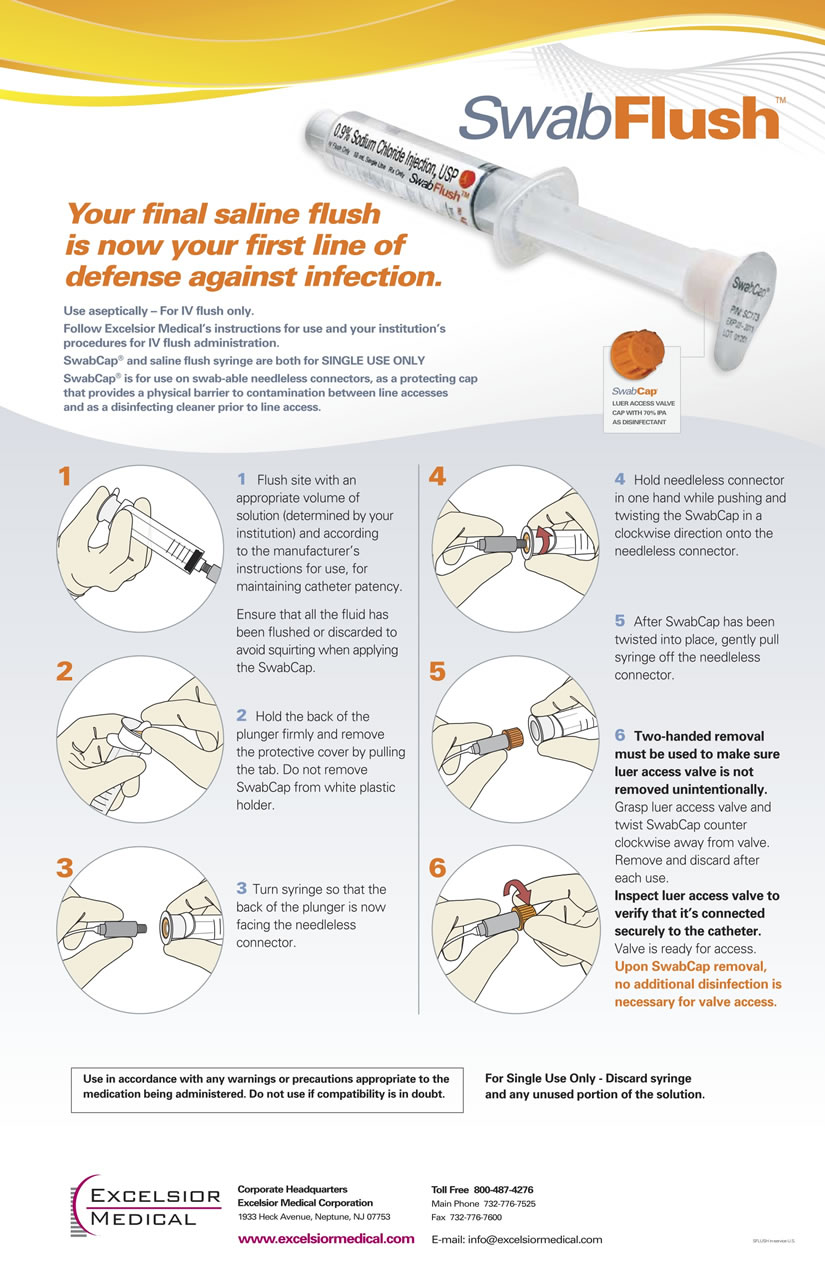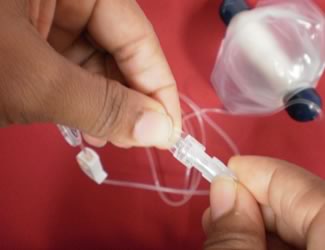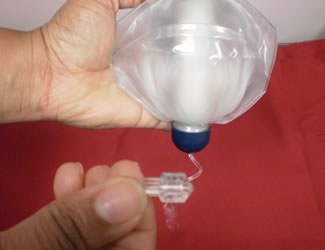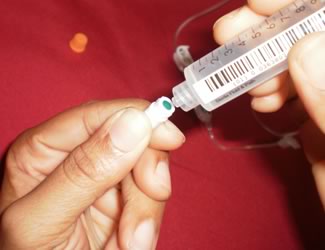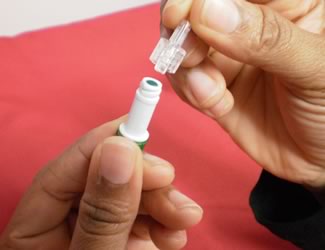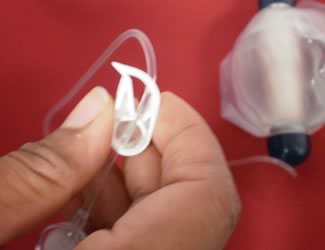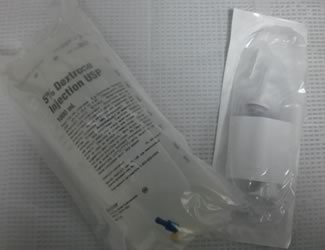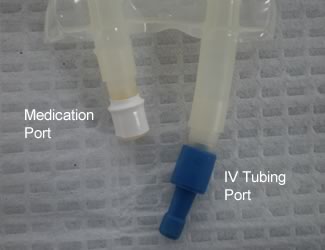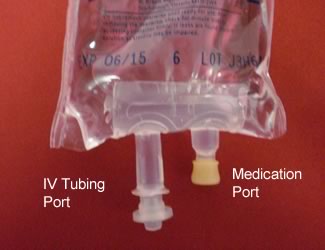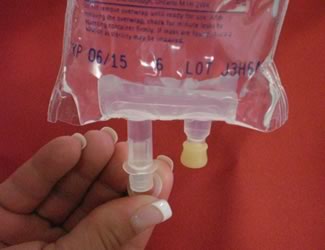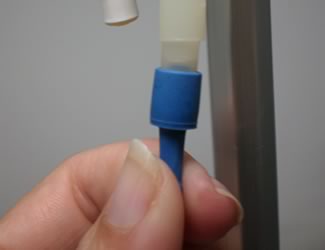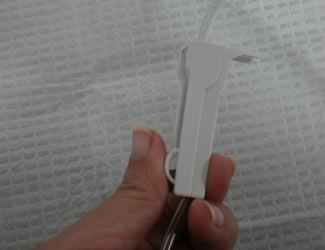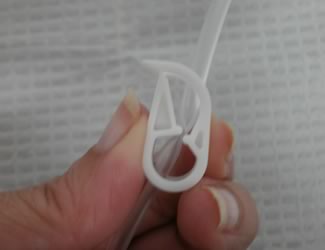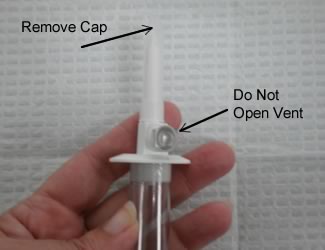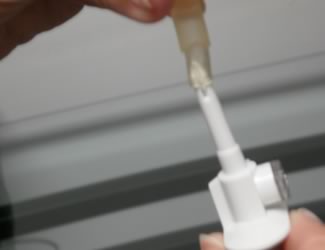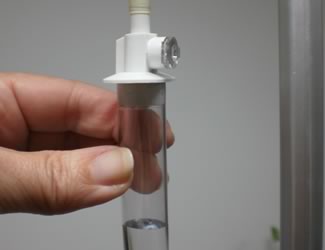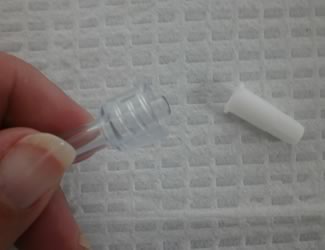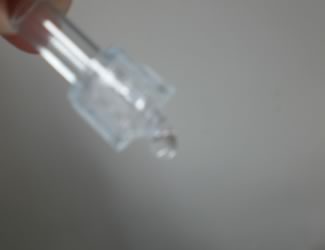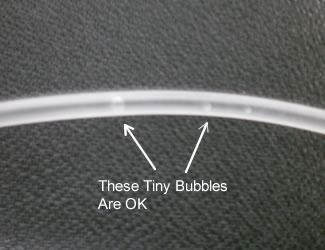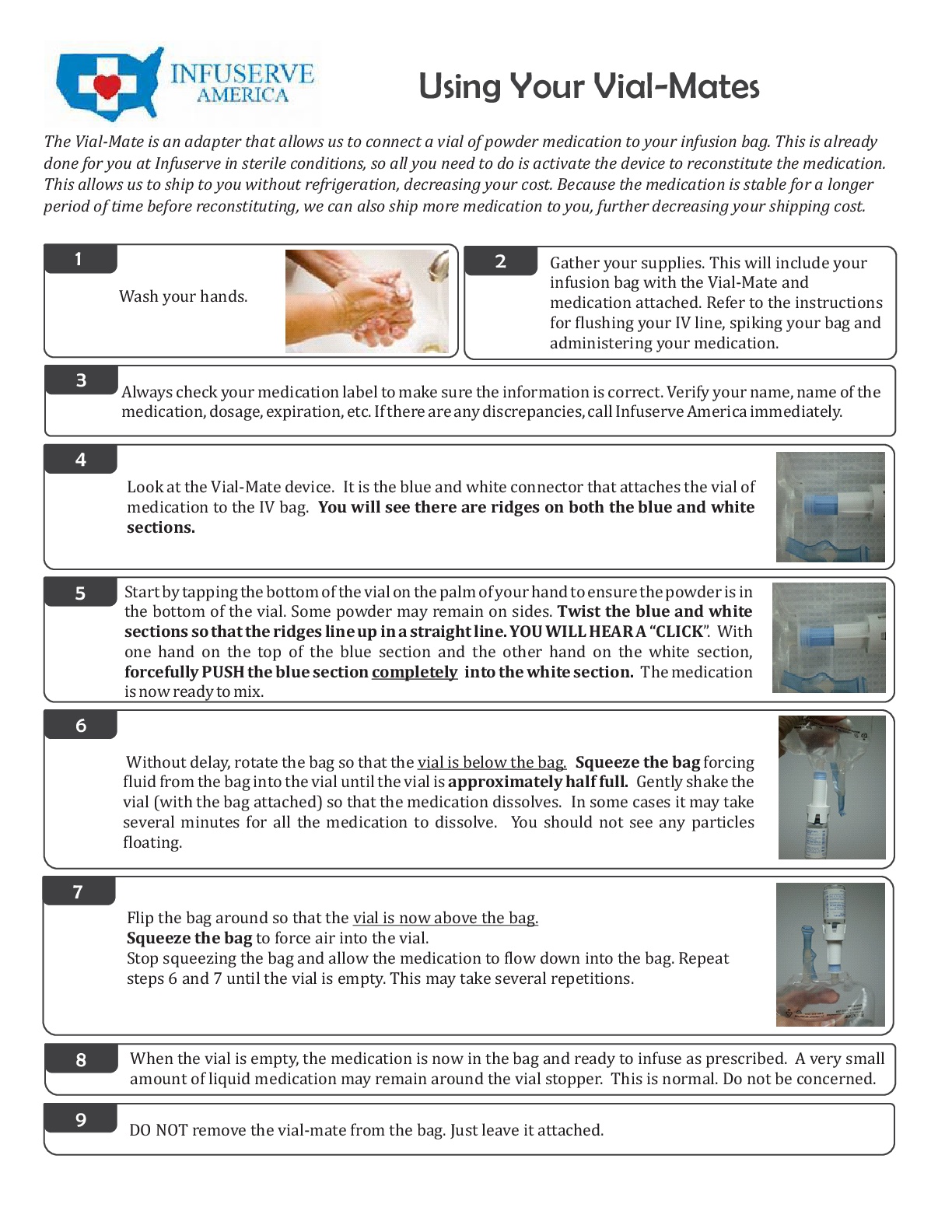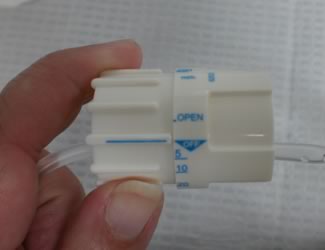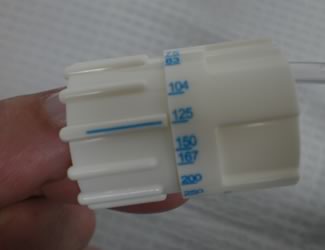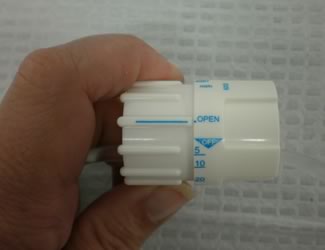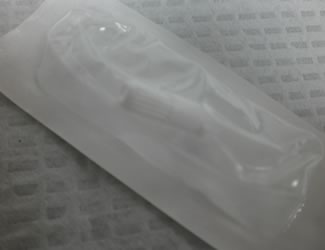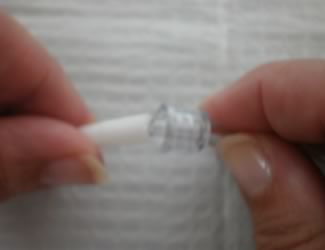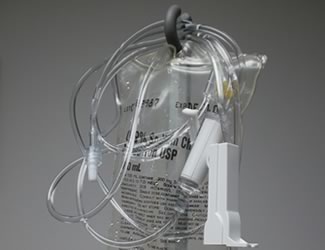A central line (PICC, port, Hickman or other tunneled catheter) dressing change is a sterile procedure. Because of this, we strongly recommend that you receive training by a healthcare professional familiar with central line care and maintenance. There are many subtle ways a sterile surface can become contaminated, which puts you at risk for blood stream infections. These infections can be very serious, and even life threatening. The central line dressings should be changed a minimum of every seven days – every 48hr if gauze is used. If at any time the dressing peels, becomes wet underneath, becomes dirty, etc. it should be changed immediately. All components that can be changed (extension sets, connectors, securement devices, etc.) should be changed whenever a dressing change is performed. As always, follow your healthcare provider’s recommendations for the care and maintenance of your line. Below is a description of the components in a standard dressing kit, and how they are used.
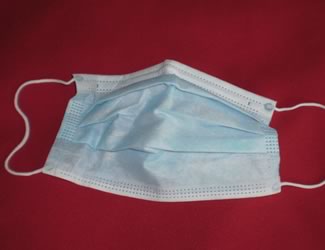
1. Mask
Used by the person changing the dressing – usually not the patient. Have the patient turn their headaway from the area to avoid breathing directly on the area.
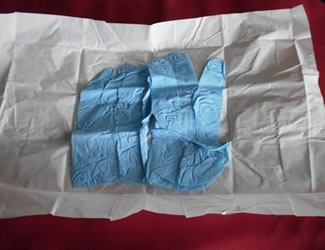
2. Sterile Gloves
These are put on in a special way after you have finished touching anything that does not have to be sterile. Anything you touch after the gloves are applied must be sterile.
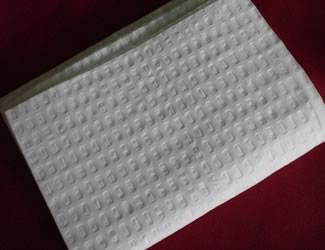
3. Towel
To be used as a drape for a sterile field.
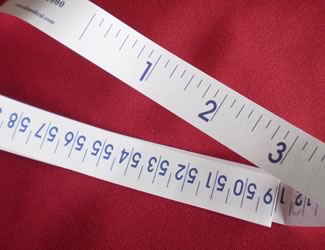
4. Tape Measure
Some agencies and healthcare providers recommend measurements be taken of the catheter to make sure it has not moved in or out too much.
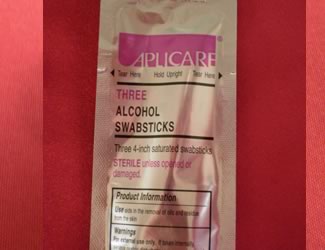
5. Alcohol Swab Stick
This is meant to be used to clean the catheter as it sometimes becomes sticky with the adhesive from the dressing. It is not meant for your skin.
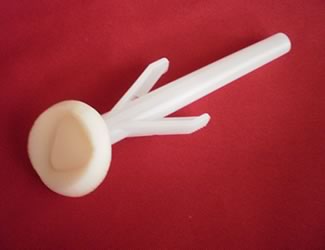
6. Chloraprep Sponge Stick
After squeezing together the “wings” on the stick, an antiseptic is released and saturates the sponge. This is meant to be used at and around the site as a “scrub.” Use it with a back and forth scrubbing action. Allow to completely dry on the skin (do not wipe off.)
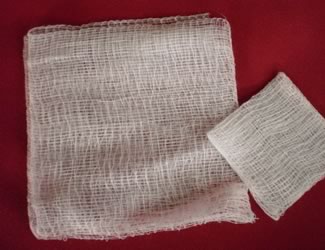
7. Gauze Pads
Included for convenience – they are NOT meant to stay under the dressing. If gauze is used under the clear dressing, the entire dressing must be changed within 48hrs, as it can be a breeding ground for bacteria.
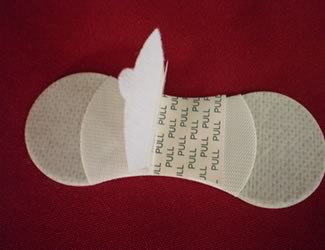
8. Grip Lock Securement Device
Used to secure the catheter from moving back and forth.
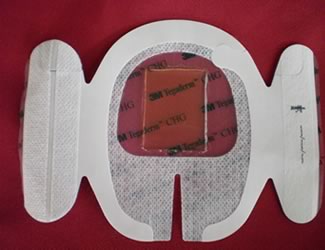
9. Tegaderm CHG Dressing
Used to cover the entire area. The gel pad with the antimicrobial is placed directly over the catheter insertion site. Make sure the area is COMPLETELY DRY before applying the dressing as covering a damp area can be a source of irritation. If the gel pad becomes very “squishy” and swollen after a few days, it is time to change the dressing.
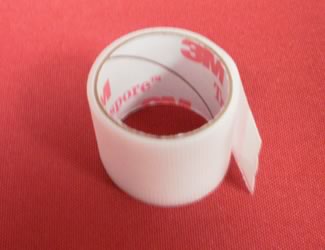
10. Tape
Used to secure tubing as needed.
Other Products
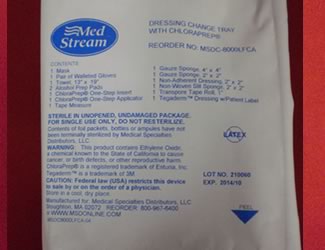
1. Basic Dressing Change Kit
Essentially the same components with the exception of the Grip Lock securement device and the Tegaderm CHG. This kit contains a basic Tegaderm dressing without the antimicrobial. To be used if you are using another securement device, another dressing, etc.
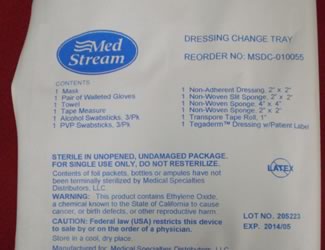
2. Betadine Dressing Change Kit
This kit contains Betadine swabsticks instead of Chlorhexidine for those patients that are allergic to Chlorhexidine.
It does not contain the Griplock (that may be purchased separately.) The Tegaderm in this kit does not contain CHG.
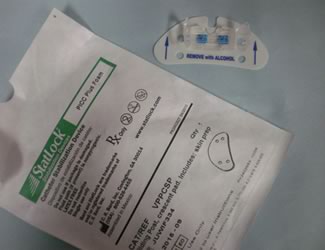
3. Statlock
A securement device that requires the “wings” of the PICC line be placed over the prongs of the device and then secured by flipping over the plastic pieces.
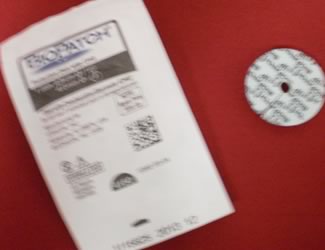
4. Biopatch
An antimicrobial disc that is placed around the catheter site. This patch contains Chlorhexidine. It must be added to the sterile field in a sterile manner. It must be placed around the catheter with the BLUE SIDE UP. It should also be applied such that the slit on the disc is below the catheter and the catheter rests upon the slit, with the edges of the slit touching each other. Must be purchased separately.
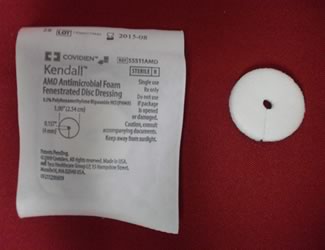
5. AMD Disc
Similar to the Biopatch except that it contains the antimicrobial Polyhexamethylene Biguanide (PHMB.) It can be applied with either side down. It should also be applied such that the slit on the disc is below the catheter and the catheter rests upon the slit, with the edges of the slit touching each other. It must be purchased separately and be added to the sterile field in a sterile manner.
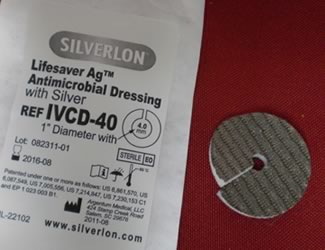
6. Silverlon
Similar to the Biopatch and the AMD disc, but the active ingredient is silver. This product must first be ACTIVATED WITH STERILE SALINE BEFORE IT IS APPLIED. This must be done in a sterile manner, and dispensed on to the sterile field in a sterile manner. It is placed around the catheter with the SILVER SIDE DOWN. It is also is applied so the slit rests below the catheter and the edges of the slit touch each other. This is also a product that would be purchased separately.
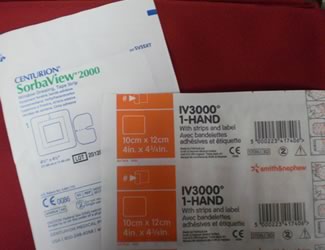
7. IV3000, Sorbaview, Reliamed
These are alternate dressings that could be tried if there is a sensitivity to the Tegaderm. In most cases, the Tegaderm is very well tolerated, particularly the Tegaderm CHG. If an irritation develops, often it is because the Chloraprep was not allowed to dry completely. However, some patients require a different dressing and these are two options. They are purchased separately.
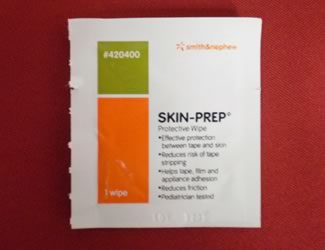
8. Skin-Prep
Packaged in an individual pad applicator, similar to alcohol wipes, this product is applied to the skin after the site is cleaned and before the dressing is applied. It is allowed to dry and creates a “tacky” film which protects the skin from irritation due to the dressing. It should be applied to intact skin. Some patients find it increases irritation rather than diminishes it. It is purchased separately.
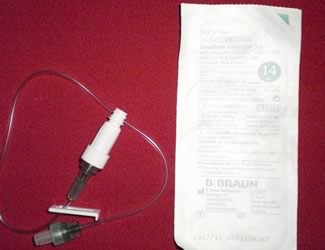
9. Extension Sets
Changed with every dressing change and comes with a needleless connector attached. Remember to flush the line with saline before attaching. The extension set should be attached directly to the catheter hub – no additional connector is necessary at the catheter. Purchased separately.
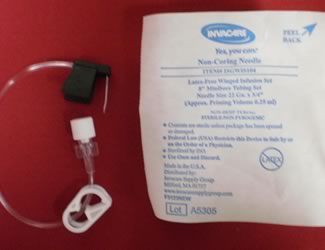
10. Huber Needles and Connectors
Used to access a port. The needles are right angled and come in various sizes. The needles come with an extension tubing attached, and require a needleless connector be added in order to connect and disconnect flushes and medication to the line.
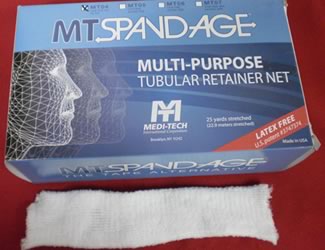
11. Spandage
Soft stockinet used to slip over the arm and hold the catheter and tubing in place. Does not need to be sterile, as it is used after the dressing is applied. Comes in a long roll, in different widths, and you would be cut the length you require. Purchased separately.
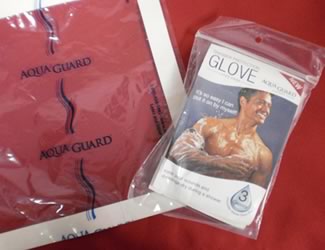
12. AquaGuard
Used to protect the dressing from becoming wet during a shower or bath. This product comes in a “sleeve” used for PICC lines and in a large square with adhesive around the edges used for tunneled catheters and ports. Purchased separately.
